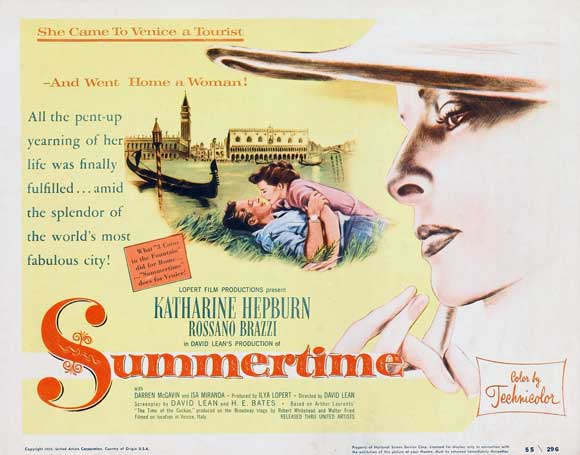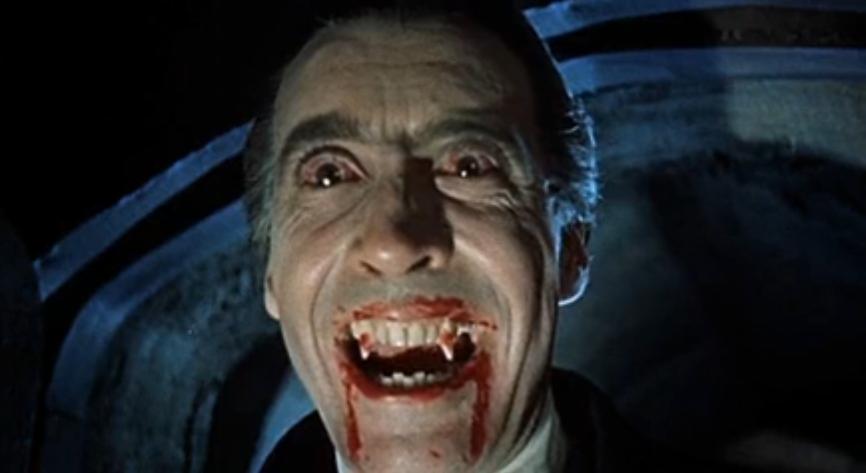Pages
▼
Saturday, December 24, 2016
Wednesday, December 21, 2016
A Kind-Of Christmas Movie: Remember the Night (1940)
Preston Sturges was having a hard time during the creation of this classic Christmas film against Paramount producer Al Lewin. "Writing [...] almost caused me to commit hara-kiri several times, but I postponed it for some later assignment. The trouble was in finding a way to get some pizazz into the story." (Sturges, Preston Sturges by Preston Sturges: His Life in His Words) Initially inspired by personal experience, falling in love with second wife and socialite Eleanor Hutton on a road trip to Palm Beach (which would also be mirrored in "The Palm Beach Story"), the problems laid in motive.
"When I had Fred MacMurray, as the district attorney,take Barbara Stanwyck, the girl on trial for theft, up to the mountains to reform her, the script died of pernicious anemia. When I had him take her up because his conscience bothered him having had her trial continued after the Christmas season, it perished from lack of oxygen. When I had him take her up by charitable impulse and the Yuletide spirit, it expired from gallopingeunuchery . So I thought of a novelty. The district attorney takes her up to the mountains for the purpose of violating the Mann Act."
Once in production, director Mitchell Leisen (who also directed "Easy Living") further pared down "Remember the Night" so much, it would push Sturges into both writing and directing his films from that point on.
"Remember the Night" was 8 days ahead of schedule and 50,000 under budget thanks to Leisen's leading lady. ""[She] was the greatest," he said. "She never blew one line through the whole picture. She set that kind of pace and everybody worked harder, trying to outdo her. She was always right at my elbow when I needed her. We never once had to wait for her to finish with the hairdresser or the make-up
The end result had pickpocket Lee stealing a bracelet from a jeweler for no good reason. We never find out the reasoning why she did it, but it takes her directly into court before Christmas complete with an idiot for a lawyer and an assistant District Attorney who doesn't want the Christmas spirit to infect the jury. Halting the trial, Sargent finds himself feeling guilty for leaving Lee in jail over the holiday and gets a bondsman to set her bail until the next trial. But she has nowhere to go in New York City with her hotel room rent
Frank S. Nugent of The New York Times would consider "Remember the Night" as "the real curtain-raiser for 1940." "It is a memorable film, in title and in quality, blessed with an honest script, good direction and sound performance. Its character drawing is deft and in splendid proportion. The incidents chosen to work the changes in the hearts and minds of the central folk are apt and aptly presented. Rarely has a theme been so smoothly advanced and so pleasantly played out so sensible and credible a conclusion." Sturges best described his own film as "love reformed her and corrupted him, which gave us the finely balanced moral that one's man meat is another man's poison, or caveat emptor. As it turned out, the picture had quite a lot of schmaltz, a good dose of schmerz and just enough schmutz to make it at the box office."
Monday, December 19, 2016
#ManCrushMonday #HolidayEdition 6 Times Bing Crosby Made Christmas Happen
"O Sanctissima"
"White Christmas"
"Ave Maria"
"White Christmas"
"Silent Night"
"Adeste Fidelis"
Tuesday, December 13, 2016
Deathmatch: Holiday Inn (1942) vs. White Christmas (1954)
Story
In "Holiday Inn," Jim Hardy (Bing Crosby), Ted Hanover (Fred Astaire), and Lila Dixon (Virginia Dale) have been in a musical act for many years. Jim and Lila have been romantically intertwined and while he plans to marry her and retire to a farm in Connecticut, but Lila has different plans. Not wanting to give up her career, or romantic affair on
Hardy retire s
When Reed goes to the flower shop to get flowers for Lila for Ted, he gets accosted by the florist (Marjorie Reynolds) who knows hin song until
Previous WW2 soldiers Captain
One such decision is having to check out who they believe an old soldier buddy's sisters awhile
It is further serendipity when they find out the sisters are heading up to the Columbia Inn in Vermont which is owned by their former commander Major General Waverly (Dean Jagger). Intrigued and without their sleeping rooms on the train with Davis offering them to the sisters, the boys find themselves helping the man they used to serve with a "let's make a show" arc for the rest of the film as Bob and Betty's relationship
I personally couldn't choose one over the other. There are elements I enjoy and love from both of them.
Favorite Underrated Song:
Favorite Bing Crosby role:
Captain Bob Wallace from "White Christmas"
Favorite Acting Performance:
Rosemary Clooney as Betty Haynes "White Christmas"
Favorite Underrated Acting Performance:
Dean Jagger as Major General Thomas F. Waverly from "White Christmas"
Favorite Costume:
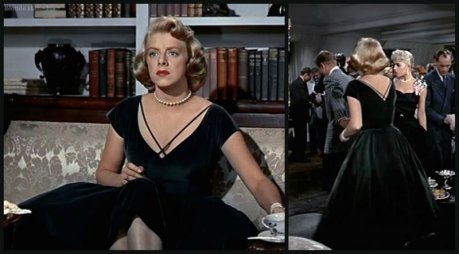 |
| Rosemary Clooney in Edith Head in "White Christmas" |
Favorite Dancing Moment:
Favorite Underrated Dancing Moment:
Favorite Christmas-sy
 |
Favorite Dancing Performance:
"I Can't Tell a Lie" from "Holiday Inn"
Favorite Underrated Dancing Performance:
Favorite Supporting Character:
Mary Wickes as Emma Allen in "White Christmas"
Friday, December 9, 2016
Wednesday, December 7, 2016
Monday, December 5, 2016
Friday, December 2, 2016
Thursday, November 24, 2016
Tuesday, November 22, 2016
TCM Christmas Schedule 2016
Thursday, December 1st
Christmas Classics
| The Man Who Came to Dinner (1941) |
1:15 am Meet John Doe (1941)
3:30 Fitzwilly (1961)
Sunday, December 4
[Wish your friendly blogger a Happy Birthday today]
| Never Say Goodbye (1946) |
6:45 am Never Say
10:00 Little Women (1933)
12:00 pm A Night at the Movies: Merry Christmas! (2011)
Monday, December 12
Christmas Classics
| Meet Me in St. Louis (1944) |
7:00 pm Meet Me in St. Louis (1944)
11:00 A Night at the Movies: Merry Christmas! (2011)
12:15 am Bachelor Mother (1939)
1:45 Bundle of Joy (1956)
3:30 Susan Slept Here (1954)
Thursday, December 15
Christmas Classics
| Desk Set (1957) |
12:45 Desk Set (1957)
Sunday, December 18
| A Christmas Carol (1938) |
6:30 am The Great Rupert (1950)
11:00 In the Good Old Summertime (1949)
Thursday, December 22
Christmas Classics
 |
| Remember the Night (1940) |
7:00 pm Holiday Affair (1949)
10:30 A Christmas Carol (1951)
12:15 am Babes in Toyland (1934)
1:45 Little Women (1949)
4:00 A Night at the Movies: Merry Christmas! (2011)
Saturday, December 24
| Holiday Affair (1949) |
5:45 am Tenth Avenue Angel (1948)
7:00 Meet John Doe (1941)
9:15 Scrooge (1970)
11:15 It Happened on Fifth Avenue (1947)
1:15 pm Holiday Affair (1949)
3:00 The Shop Around the Corner (1940)
5:00 Meet Me in St. Louis (1944)
7:00 Christmas in Connecticut (1945)
9:00 The Dolly Sisters (1945)
11:00 In the Good Old Summertime (1949)
1:00 am The Man Who Came to Dinner (1941)
5:00 Going My Way (1944)
10 "Chicken Soup" Films That Will Last You Through the Winter
Chicken Soup Movie. "Films that make you feel better when you're sick, and others that you might discover when you're housebound." (48 Chicken Soup Movies)
[
Old Mrs. Wilberforce finds her world completely upside-down when a new tenant (Alec Guinness) turns out to be plotting a heist with three other criminals.
The wife of a British Earl (Deborah Kerr) finds herself attracted to a Texas Oilman (Robert Mitchum) who visits their estate with a tourist group, When she leaves her boring husband (Cary Grant) a friend and rather annoying old flame (Jean Simmons) comes back into his life then manners and hijinks ensue.
A regular everyday Doctor (Griffith Jones) finds himself fishing
Divorced actors Fred Graham (Howard Keel) and Lilli Vanessi (Kathryn Grayson) still harbor feelings for one another while starring in a musical production of "The Taming of the Shrew" even with mobsters and Graham's younger girlfriend and co-star running around both on stage and off.
It all started with a scavenger hunt which brings a "forgotten man" Godfrey Park to the rich and elite Bullock family. The older daughter (Gail Patrick) despises him for his status, the mother too ditzy to notice anything, the father (Eugene Pallette) too befuddled by all that high powered estrogen , but there is something about the younger daughter (Carole Lombard) he rather likes.
Part comedy, part musical, and part pure Frank Capra wit, a hard-nosed reporter (Crosby) finds himself adopting two children while on location in an orphanage in France. Now the problem is Pete can't keep them unless he gets married so his sights land on his ex-love Emmadale (Jane Wyman) who will be getting married soon if he doesn't do something about it.
You Were Never Lovelier (1942)
To Be or Not to Be (1942)
In order for his youngest two daughters to marry their respective beaus despite wanting all three to marry in succession, nightclub owner Eduardo Acuna (Adolphe Menjou) decides to melt his oldest daughter's heart to the idea of love. While the flowers and anonymous notes work, it is accidentally allowing stranger place.
To Be or Not to Be (1942)
In one of Jack Benny's rare opportunities to act, a subpar Shakespearean actor and troop-manager in Nazi-occupied Poland discovers his actress wife (Carole Lombard) having an affair with a lieutenant. When a Polish Resistance leader comes to town with intentions of sweating out his wife in search for Lieutenant Sobinski and his men, Tura and his theater company is forced to leap into action to save Maria and getting the hell out of the country.
A middle-aged woman (Hepburn) on her first vacation out of the United States discovers herself and her first love in Venice.
Robin and the Seven Hoods (1964)
Poetically shot before and after the assassination of JFK, "Robin and the Seven Hoods" is a parody on
Friday, November 18, 2016
Wednesday, November 16, 2016
#WomanEmpowermentWednesday Anita Loos
| Anita Loos (1889-1981) |
- First screenplay adapted to the screen was "My Baby" (1912) starring Mary Pickford and Lionel Barrymore
- First staff script writer at Triangle Film Cooperation and paid $75 a week plus a bonus for every produced script
- Assisted the French author Colette in adapting "Gigi" to the stage and launching the career of Audrey Hepburn
- Praised by MGM producer Samuel Marx as "a very valuable asset for MGM, because the studio had so many femme
fatales [... ] that we were always on the lookout for 'shady lady' stories. But they were problematic because of the censorship code. Anita, however, could be counted on to supply the delicate doubleentendre - Received $25 dollars for her first screenplay "He Was a College Boy" to Biograph Company
- First screen credit was for "
MacBeth - Photoplay Magazine dubbed Loos "The Soubrette of Satire"
- First film with MGM was an adaptation of Katherine Brush's "
Red-Headed - Got Aldous Huxley his
screenwriting job at MGM - Helped launch the career of Douglas Fairbanks, having written his first five films
- Best known for writing "Gentlemen Prefer Blondes" which opened on stage in 1926 and spurned two
films
Monday, November 14, 2016
#ManCrushMonday 10 Times Jimmy Stewart Owned the Screen
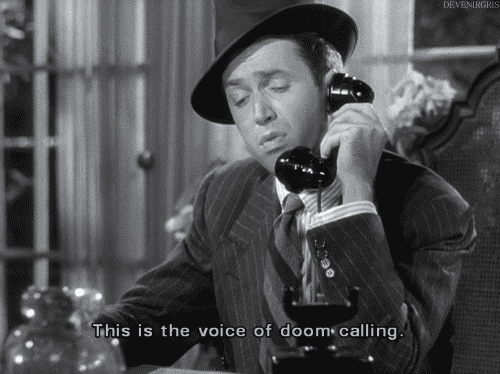 |
| The Philadelphia Story (1940) |
| The Shop Around the Corner (1940) |
Harvey (1950)
Anatomy of a Murder (1959)
| The Philadelphia Story (1940) |
| Bell, Book and Candle (1958) |
| Rose-Marie (1936) |
Shenandoah (1965)
It's a Wonderful Life (1946)
Thursday, November 10, 2016
Remake this, Not This!: Kiss Me Kate (1953)
Remake This...
The 1953 film adaptation of the musical was received lukewarmly, having been considered the first 3D musical. "Kiss Me Kate" earned $2,011,000 both in the US and Canada as well as $1,106,000 internationally, but reviews earned mixed messages. "For the voices and the playing of Miss Grayson and Mr. Keel as the acting team who work out their own domestic squabbles in romping through Shakespeare's "Shrew" are juicy and uninhibited, the costumes and settings are fine and the performers who accompany the principals are in joyous and compatible gear," Bosley Crowther of The New York Times explained. But Variety praised "under George Sidney's skilled direction, Kate unfolds smoothly all the way as it goes back and forth from the backstage story to the play within the play and works in the numerous - and brilliant - Cole Porter tunes."
Dream Cast:
Catherine Zeta Jones
Hugh Jackman as Fred Graham (Petruchio)
Kate Hudson as Lois Lane (Bianca)
Ryan Gosling as Bill Calhoun (Lucentio)
Christopher Walken as "Lippy"
Nathan Lane as "Slug"
A Star is Born (2017)
Tuesday, November 8, 2016
5 Times When... Rita Hayworth Dazzled
 |
| Gilda (1946) |
The Lady of Shanghai (1947)
 |
| You've Never Been Lovelier (1942) |
Gilda (1946)
| You've Never Been Lovelier (1942) |
Monday, October 31, 2016
So... About Last Night: Abbott and Costello Meet Frankenstein (1948)
"[Lou Costello] came charging
Originally entitled "The Brain of Frankenstein," the comedy horror resurrected Bela Lugosi to his last A-list film and Lon Chaney Jr.
This was all Bud and Lou's film, eventually titled the simpler "
Lugosi, however, was a staunch professional, not partaking in the tomfoolery. Suffering from
"
Tuesday, October 25, 2016
Opinion: Christopher Lee's Contribution to the Character of Dracula
Bela was the gentleman Dracula with the cape and slow phonetically spoken English, Max Schreck the pure image of evil and the plague, Carlos Villarias the suave and debonair Dracula pre-Gary Oldman, but where does Christopher Lee belong in the continuum? He is capable of fantastic and debonair movement yet when the bloodshot eyes are in attack mode, he is the pure image of evil, Lee is a lusty sort of Dracula, his seduction skills carefully orchestrated full of a melancholy yet a more physically violent type that Lugosi could never be.
This is the thing about Lee as Dracula, he barely has to speak to come across as commanding. Perhaps it is his 6'5" height (which got him the job in 1957's "The Curse of Frankenstein"), posture and body language of a nobleman, shoulders forward in an intimacy with Jonathan Harker in the first movie and an extraordinary sadness and melancholy in his eyes during all of "Dracula Has Risen From the Grave" (1968). But with what little dialogue he is given, it is spoken with a great command. In his first scene, Lee's musically trained intonation is both quick and hurried, almost as if one is meant to pay more attention to his rather deadened yet strangely intimate gaze. Even a flash in his eyes towards Jon Van Eyssen's Harker immediately gives away not just
But as the films progress, the dialogue all but diminishes and little flashes of that nobleman presence all but
Personally, I have to believe this odd melancholy is what separates Lee from the rest of the Draculas in film history. There is almost a formula all of the
The eyes have been important to the art of the Dracula films, especially since Hammer Productions
But not everyone appreciates this incarnation of the famous vampire. 1958 critic A.H. Weiler of the New York Times describes Lee's performance as "grim but not nearly so chilling as Bela Lugosi in the title role." Thankfully, in the trade journals from 1958, Lee "is a real fright as that royal fiend" and time has made fans out of many within the cult of Hammer. "One moment he is a perfect gentleman with manners and courtesy, the next moment he is transformed into an almost-rabid monster, displays raw, animalistic instincts like never before. He possesses a more sexual, sinister element..." ("Retro Review: Horror of Dracula - Daily Dead") Six days after Lee's death in 2015, Tim Stanley of the Telegraph perfectly memorialized that "no other actors [...] have captured the ambiguity of Dracula like Lee did. Through association he is, like the vampire, immortal."
Films Available Online
- The Horror of Dracula (1958)
- Dracula, Prince of Darkness (1966)
- Dracula Has Risen From the Grave (1968)
- Taste the Blood of Dracula (1970)
- Scars of Dracula (1970)
- Dracula A.D. 1972 (1972)
- The Satanic Rites of Dracula (1973)
Friday, October 21, 2016
Wednesday, October 19, 2016
Bela Lugosi's Finest Moments
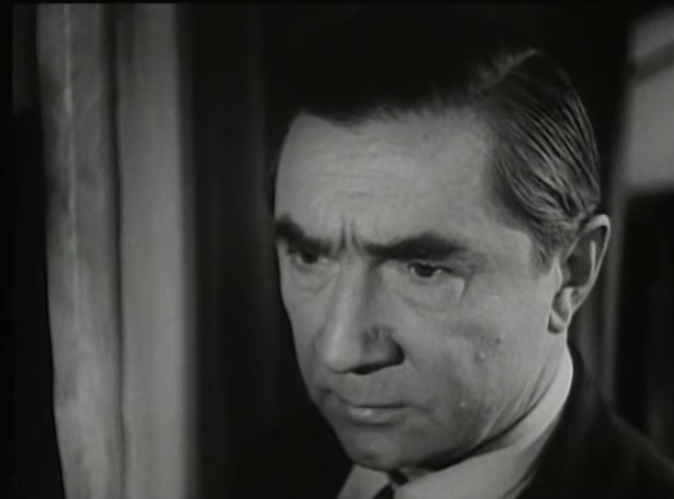 |
| All the acting in his eyes in "Invisible Ghost" (1941) |
Having the ability to hold it together during
Overall presence
Absolute grace in movement...









